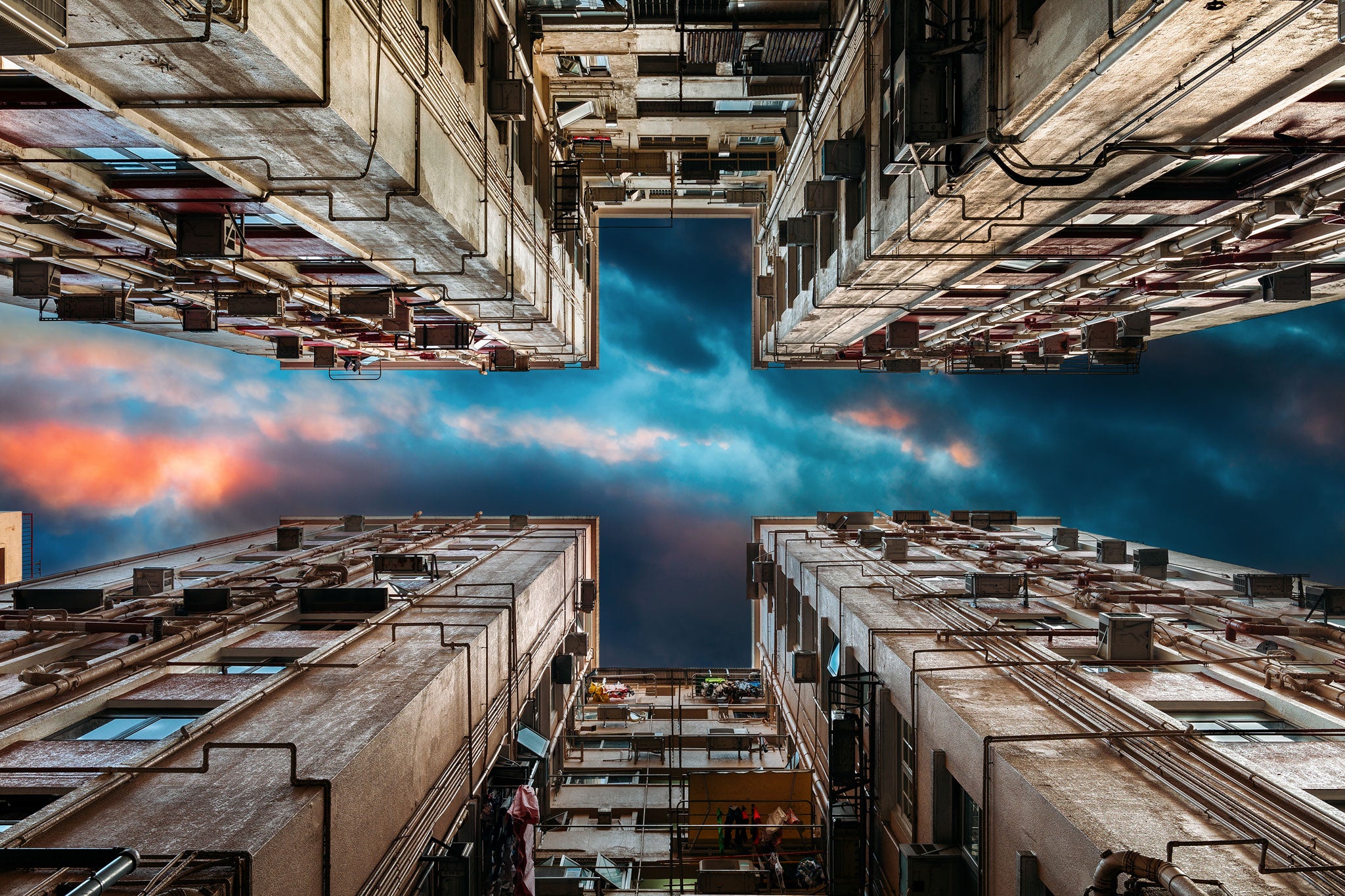Photographer Peter Stewart’s Stacked features surreal images of Hong Kong’s 100-storey housing estates
The Australian photographer raises his eyes to the heavens for his latest project

When Australian photographer Peter Stewart first visited Hong Kong around six years ago, he found a city and living environment entirely alien to him. "It was very different to what I knew from home, where we have an almost infinite amount of space," he says.
Intrigued by its cramped spaces and tall towers, Stewart began to photograph the urban landscape, focusing on the huge social housing developments in the suburbs. He developed a style of shooting from the ground looking up, with towers crowding the edges of his images, creating a surreal tunnel effect that ends in odd geometric shapes.
"They're not modern skyscrapers," he explains, "they're big estates, often made up of seven or eight 100-storey towers, all just a few feet apart, almost touching. The designs are very native to Hong Kong – old brick buildings, with bits and pieces tacked on to them, barely holding together. It's those shapes, when you look up, that make them so interesting. The modern ones are sleeker and more bland."
The towers, he explains, are the only way so many people can fit into such a tightly packed space. "On Hong Kong Island and in Kowloon [to the north], everybody lives in some form of high rise; it's only towards the border that you find anything of two storeys."
Yet, he adds, such close proximity of living doesn't necessarily make for a miserable environment. "The perception from the outside is that living there must be horrible, but the reality is that it's not much different from a big hotel," he says. "There are lots of people in the lobby, four or five lifts going up and then the apartments are like hotel rooms. The living space is what you make it but is usually very, very small. On ground level it's very busy: the buildings are like little gated communities and around them you find parks, supermarkets, playgrounds, old folks doing yoga and playing chess. Partly because of the small internal space, everybody lives a more outdoor life until 10pm or 11pm."
Stewart admits that his project, called "Stacked", can be misleading. By exploring the inhuman scale of the buildings with dramatic, alien lighting that evoke the science-fiction landscapes of films such as Blade Runner, he accepts that his images "don't tell the whole story. It's a stylistic, narrow view." Stewart shoots on digital and manipulates the pictures to create "a mix between real and unreal, depending on the scene. I'm not going for absolute realism; I like the colours to really pop out at you."
Stewart first visited Hong Kong after leaving a job at Apple to focus on his interests of travel and photography. He now lives in Hong Kong four to five months a year, using it as a base to travel to other locations in South-east Asia. He is always hunting for new locations using Google Earth to find "the sorts of shapes that I'm interested in. You can see those circular and square designs around the open courtyard and then you go there to see if you can get into that spot. It's like being at the other end of a Google Earth camera."
For more: peterstewartphotography.com. Select prints from the series are available through Peter's website and artitled.nl
Join our commenting forum
Join thought-provoking conversations, follow other Independent readers and see their replies
Comments